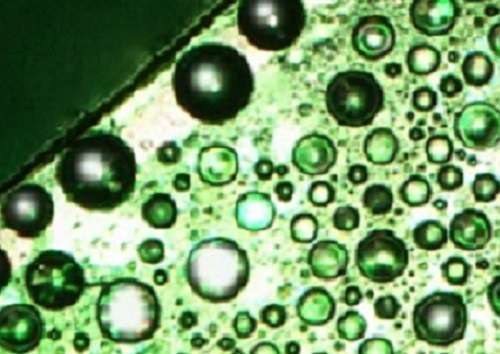Surface wettability has little effect on atmospheric water gathering, but edge structure is crucial

Water harvesting is an age-old technique of collecting atmospheric water vapor. Researchers are looking to nature to learn about the efficiency of surfaces used to collect the vapor.
Scientists have long assumed that the capacity of water-harvesting surfaces to interact with water—their wettability—should be a crucial factor in their performance, but this latest research at KAUST reveals a surprise.
"Whether a surface 'loves' or 'hates' water does not matter that much for its final water-harvesting performance," says Peng Wang of the KAUST Water Desalination and Reuse Center. Wang's use of the terms love and hate reflects the technical distinction between surfaces that are hydrophilic (water loving) and hydrophobic (water hating).
Research at KAUST aims to improve the efficiency of collection methods for water harvesting—an important source of drinking water in regions with little rainfall but high humidity—through considering the influence of attributes of different surfaces, including wettability and edge effect. Wang performed experimental and theoretical studies on the effect of surface wettability, edge structures and wettability hysteresis working with his Ph.D. student Yong Jin and Lianbin Zhang, a former researcher from his KAUST lab, who is now at Huazhong University in China.
Rather than the surface's wettability properties being paramount, the team's research showed that variation in the edge of the surface structures significantly affects water-droplet formation, and that rough-edged structures mimicking some found in nature are highly effective.
"Trying to develop artificial surfaces like the surface of a cactus seems a good way to go," says Wang. His earlier work also explored the water-catching power of the exoskeleton of desert beetles.
Water harvesting can be achieved passively by either exposing a surface to humid air or actively, for example, by cooling the surface to encourage water condensation—similar to the operation of a domestic dehumidifier. Passive harvesting has a long history, with suspended fabrics used in several cultures to gather water from the air.
"The field of water harvesting is both mature and primitive at the same time," explains Wang. "It is mature because of its ancient origins yet primitive because of the limited understanding of the efficiency of different surfaces."
The team's future plans in this field will complement their related interest in using solar energy to evaporate seawater and wastewater to then condense purified liquid water from the resulting vapor. "The knowledge we are obtaining from studying atmospheric water harvesting will definitely be a help for other research," says Wang.
More information: Yong Jin et al. Atmospheric Water Harvesting: Role of Surface Wettability and Edge Effect, Global Challenges (2017). DOI: 10.1002/gch2.201700019





















